Prices have been brought up to date, and are for stamps in 'average' condition. The currency is now selectable, the default is British Currency (£). I have revised Hiscocks' original listing, though leaving references to the original designations. The new designations have 'RH' numbers (Revised Hiscocks) to avoid confusion. Setup |
| Shortcuts to different sections: | ||
| Telephone Cancels | Telephone Stationery | Telephone stamps |
My notes:
Incorporated 10th March 1881 from a merger of The Telephone Company Ltd (using the Bell patent) with the Edison Telephone Company Ltd.
Additionally it merged with the UTC and with the Lancashire and Cheshire Telephone Company in 1889 creating a much wider coverage.
According to Raymond Lister (1961) "in 1880 it was decided by a Court of law that a telephone was practically a telegraph." That put them in the domain of the Post Office monopoly.
Though having the legal right to close down the existing telephone companies, the Post Office did not initially have the resources to replace them. It therefore issued licenses to them instead.
The National Telephone therefore operated under license from the Post Office which charged 10% normally and 50% for use of their Trunk (inter-city) lines.
The Post Office took control of most of their operation at the beginning of 1912.
| Courtesy John A. McCulloch, © 2010 ARR. | Courtesy John A. McCulloch, © 2010 ARR. | Courtesy of David Pleiksna. | Courtesy of Ian Pinwill. |
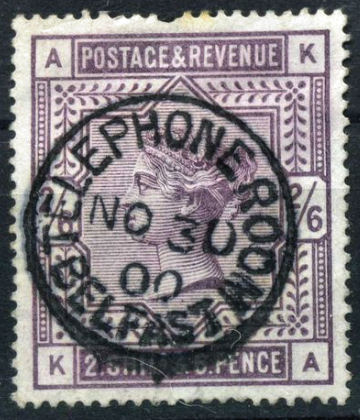 |
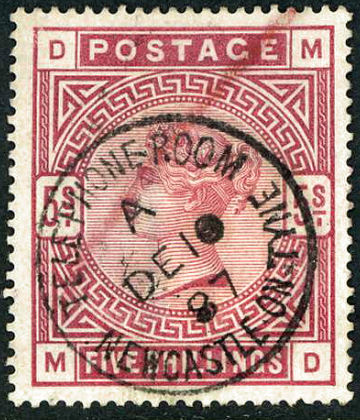 |
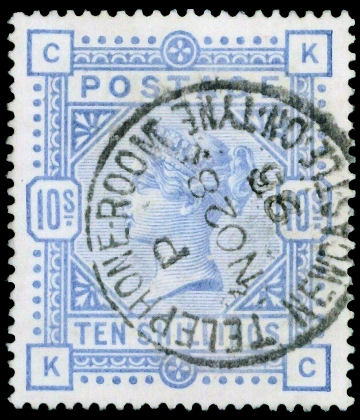 |
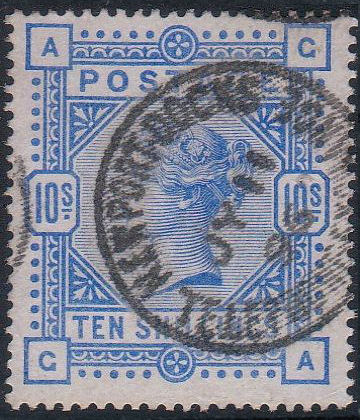 |
| The Telephone Room, Belfast | The Telephone Room, Newcastle-on-Tyne | Newcastle on Tyne Telephone Room | Newport Docks Telephone Exchange |
The last shows the use of a cloth over the cancelling device to retain ink and reduce the frequency of ink-pad use. A trick used in busy stamping environments.
| One of mine. | Courtesy of Chris Potts. |
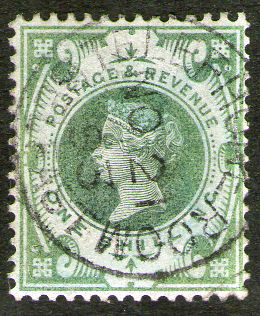 |
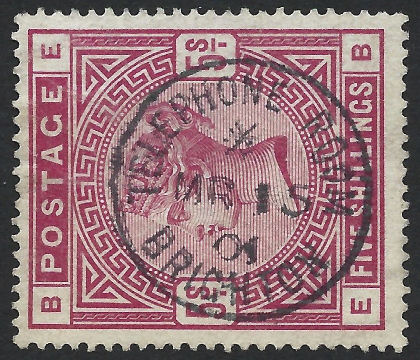 |
| The Telephone Room, Belfast | The Telephone Room, Brighton |
| Courtesy John A. McCulloch, © 2010 ARR. | Courtesy Chris Potts. |
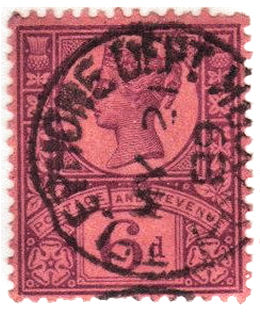 |
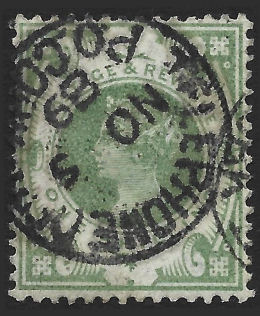 |
| The Telephone Dept. P.O. Cork | The Telephone Dept. P.O. Cork |
Telephone Service Receipt form "Telephones.—No. 64." used at Girvan 17 November 1913 and forwarded to Glasgow.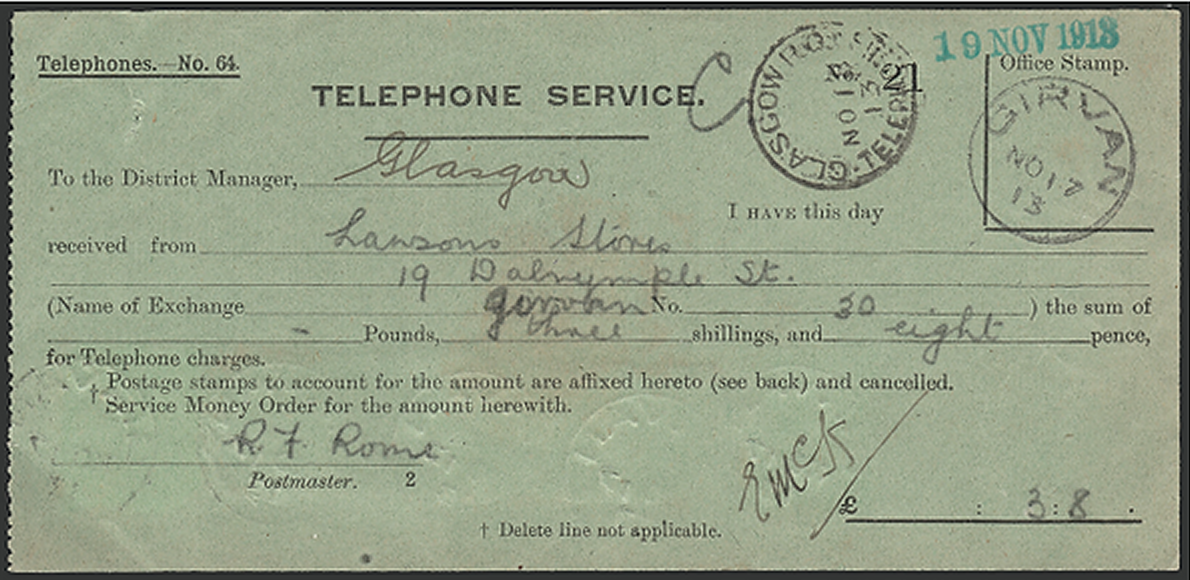
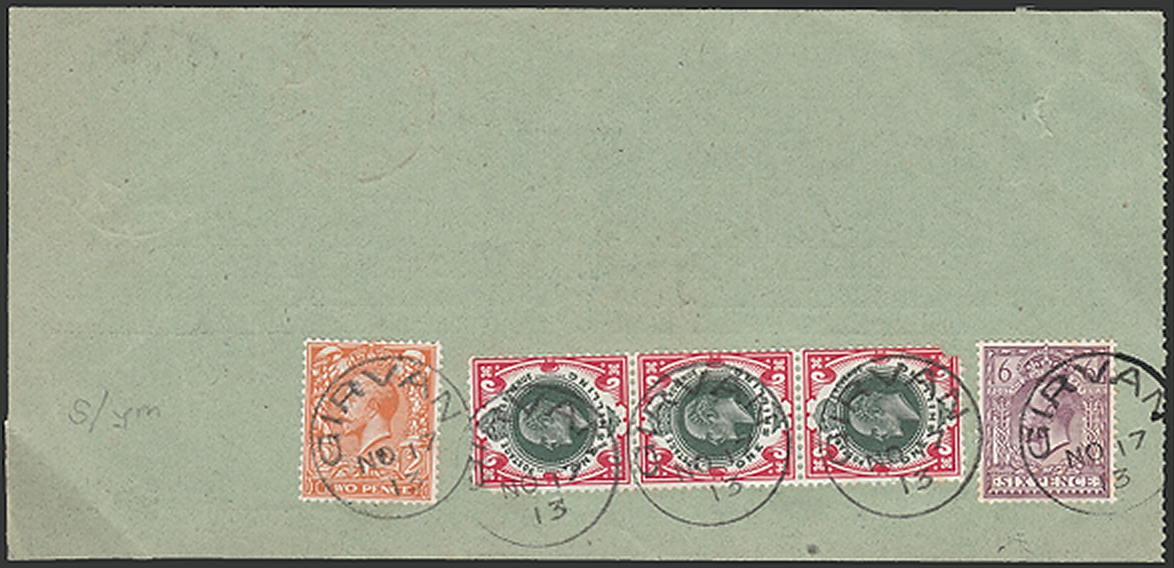
This was for 3s8d which was paid by the use of mixed-reign postage stamps. — Images courtesy of Epsom & Ewell Philatelic Society.
(click image to see their telephone article).
Payment documents relating to a bill for the last Quarter of 1925.
Hiscocks added the following 2 notes:
| Note 1. These stamps may be used for payment of telephone accounts and are hand cancelled on presentation at Post Offices or Telephone Offices. The GPO is reticent about what happens to them next but they are presumably checked centrally and subsequently destroyed. They are not available genuinely used. |
| Note 2. Cards on which they may be collected as a form of saving towards telephone bills are available from Post Offices. |
My Note: The telegraph stamps were not supposed to have been available used either, but the GPO staff are only human.
Some apparently genuine used examples are shown below.
1979 (29 January) White wove paper. No watermark. Perf. 15 x 14½(£1) and 14½ x 15(£5).
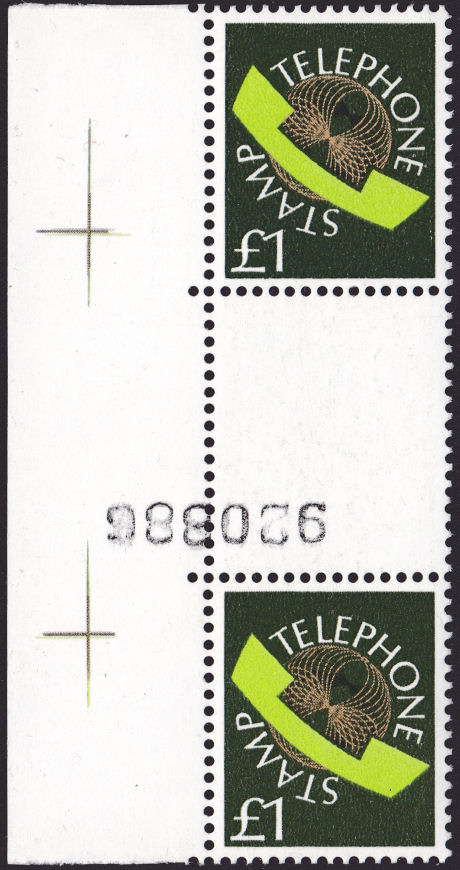 |
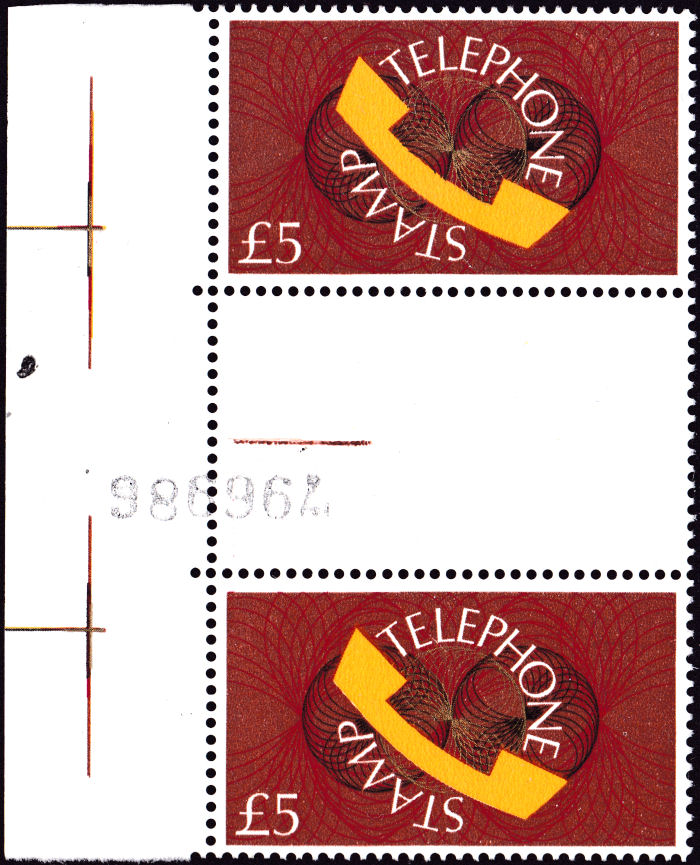 |
| Type 1 - RH1 | Type 2 - RH2 |
Hiscocks Type 1 and Type 2
Forgeries of the £5 are known, they are perforated 12½ x 13 with brighter colours.
| RH # | Hisc. | Type. | 1979 - 81 ? Description | Mint | Used |
|---|---|---|---|---|---|
| RH1 | H1 | 1 | £1 deep olive, lime green, black and gold | 3.00 | - |
| RH2 | H2 | 2 | £5 brown, crimson, yellow, black and gold (28/8/79) | 18.00 | - |
British Telecommunications, trading as British Telecom, severed its links with the Post Office under the British Telecommunications Act, 1981 and became a totally separate public corporation on 1st October 1981.
They were now two separate organisations with their own chairmen and boards of directors.
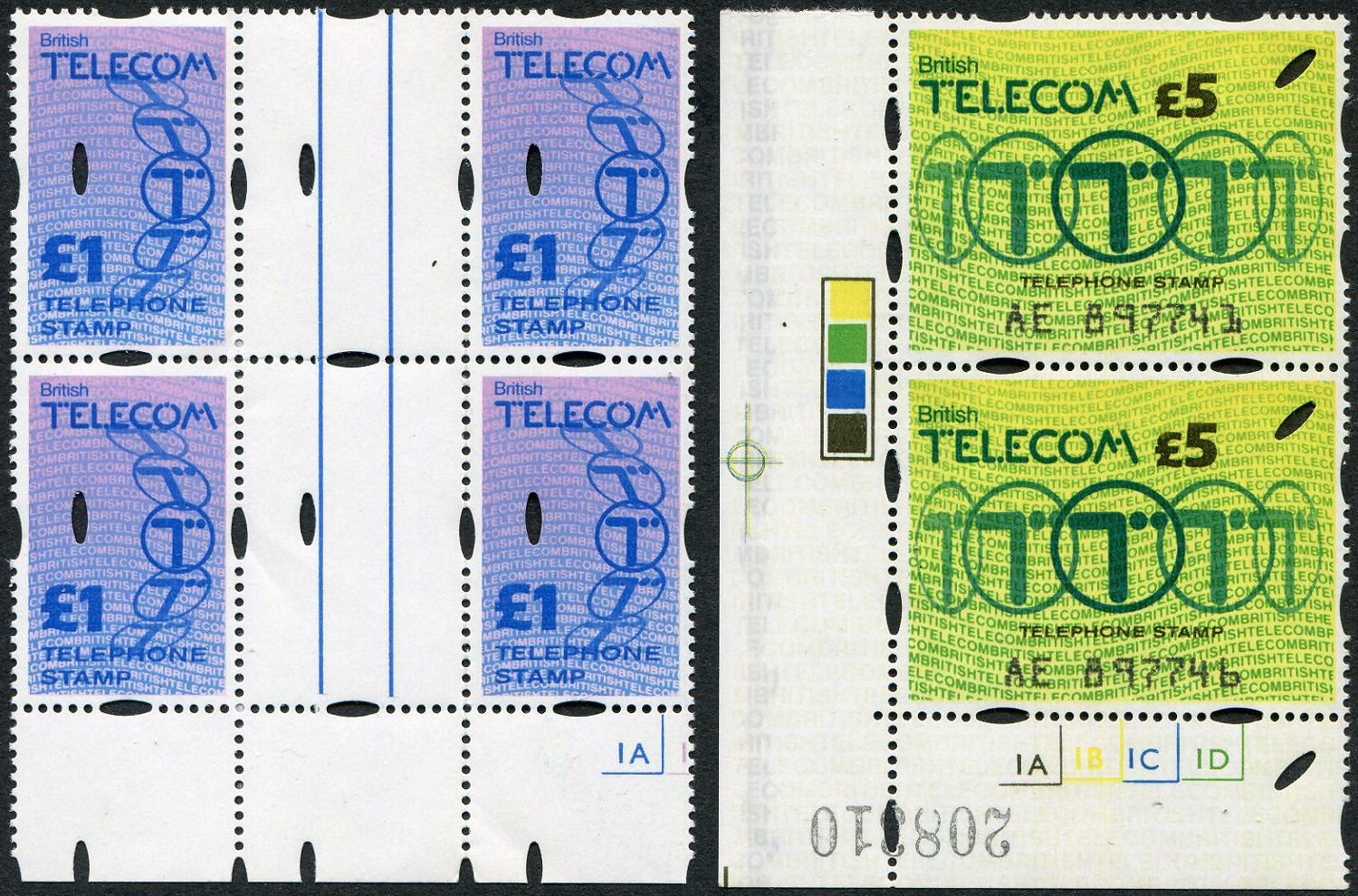 |
|
| Type 3 - RH3 | Type 4 - RH4 |
Images of Type 3 and Type 4 courtesy of Martin Robinson (Mareval2 on ebay).
Harrison and Sons produced these by photogravure. The £5 has the unusual feature of individual serial numbers.
Despite all the security features, forgeries were again produced of the £5 and these were withdrawn 13 February 1987.
I have no details of the forgeries. The originals are perf.14
| RH # | Hisc. | Type. | 1985 Description | Mint | Used |
|---|---|---|---|---|---|
| RH3 | - | 3 | £1 pale blue and mauve (1985) | 18.00 | - |
| RH4 | - | 4 | £5 yellow, green, blue and black (1985) | 90.00 | - |
 |
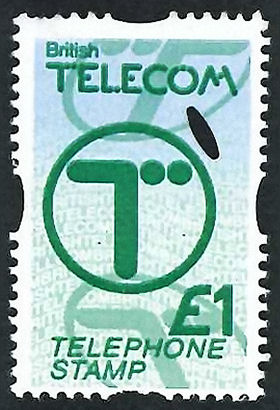 |
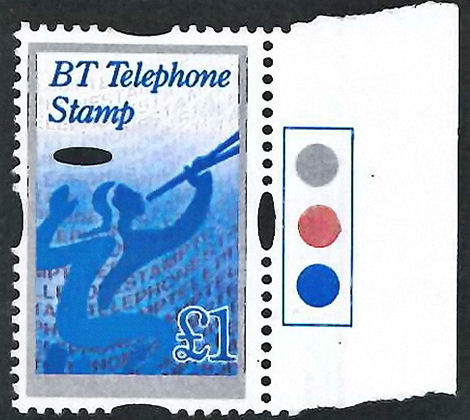 |
| Type 5 - RH5 | Type 6 - RH6 | Type 7 - RH7 |
| 1987 mage courtesy of Jeff Turnbull. | 1990 and 1992 images courtesy of Mark Talbot. | |
| RH # | Hisc. | Type. | 1987 - 1992 ? Description | Mint | Used |
|---|---|---|---|---|---|
| RH5 | - | 5 | £1 bright purple and pale lilac (1987) | 12.00 | - |
| RH6 | - | 6 | £1 emerald, pale blue-green and pale blue (1990) | 9.00 | - |
| RH7 | - | 7 | £1 blue, silver and red-brown (1992 ?) | 12.00 | - |
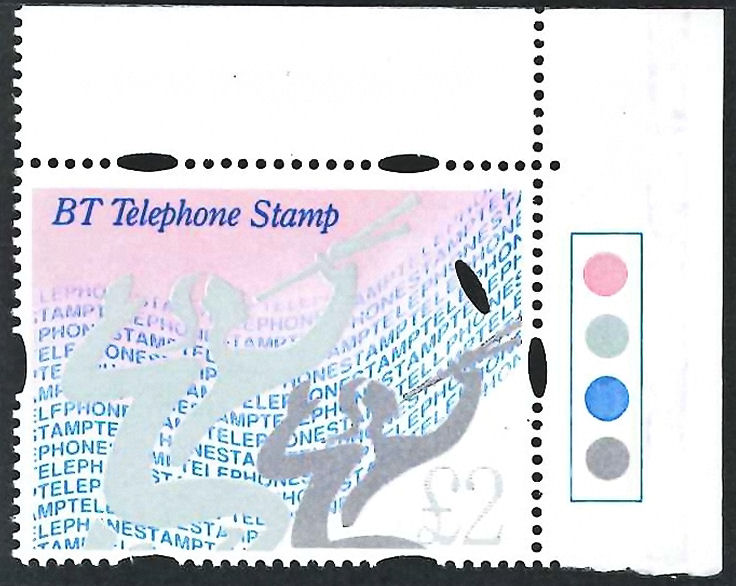 |
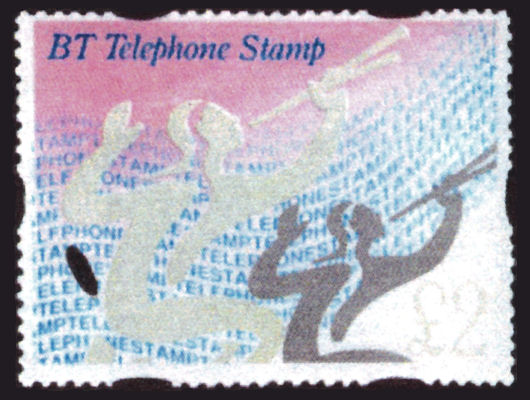 |
| Type 8 - RH8 - courtesy of Mark Talbot. | Type 8 - RH8a - courtesy of John Barefoot. |
1993. John Barefoot indicates that the security punch hole is consistently placed.
For the other images I have, that is true. For this some however, it looks like the sheet was rotated 180° when punched.
John Barefoot's image has the security punch hole at the bottom-left.
I do not know the relative scarcity of the two types.
| RH # | Hisc. | Type. | 1993 ? Description | Mint | Used |
|---|---|---|---|---|---|
| RH8 | - | 8 | £2 pink, pale green-grey, blue and grey (1993) | 6.00 | - |
| RH8a | - | 8 | security punch at bottom-left | 6.00 | - |
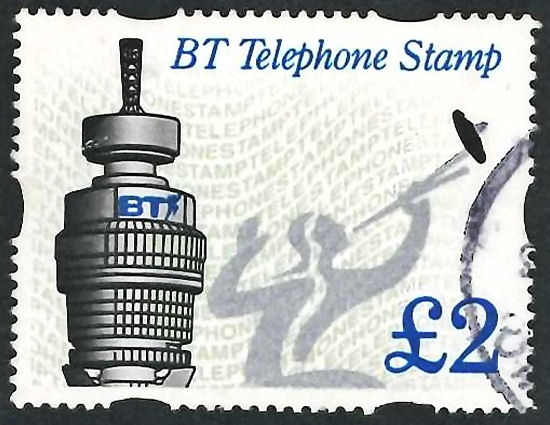 |
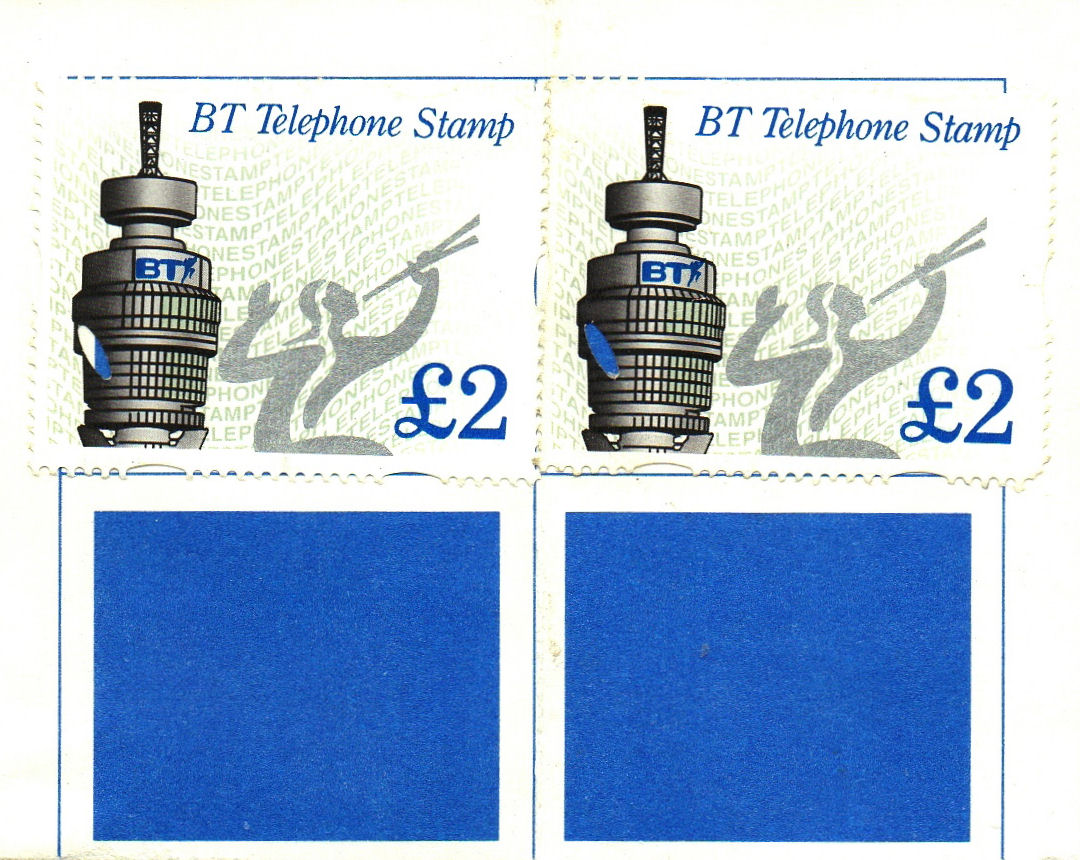 |
|||||||||||||||||
| Type 9 - RH9 - courtesy of Mark Talbot. | ||||||||||||||||||
|
||||||||||||||||||
| Type 9 - RH9a - courtesy of Jeff Turnbull. |
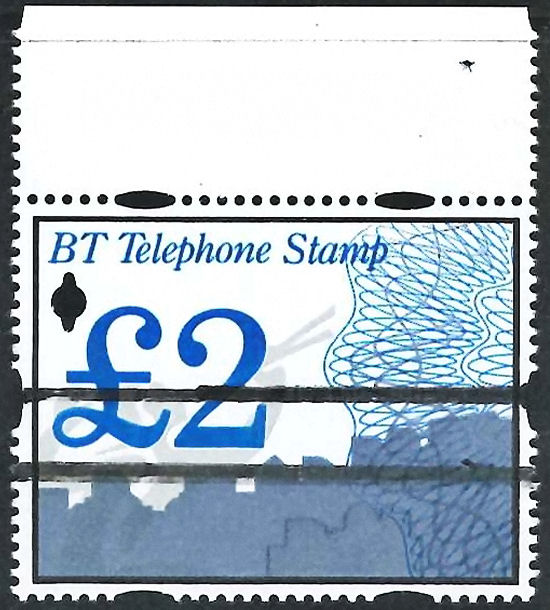 |
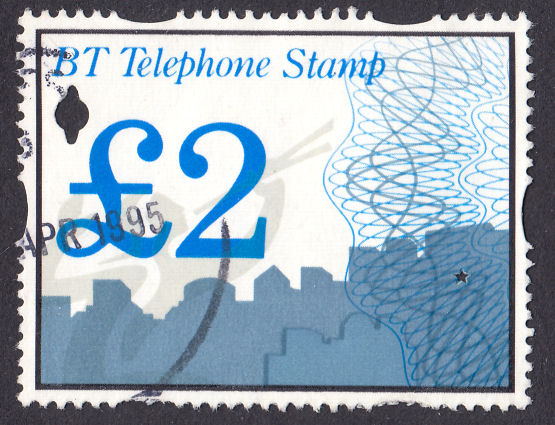 |
| Type 10 - RH10 (with training bars) | Type 10 - RH10 (used 1995) |
1995? Image with training bars, courtesy of Mark Talbot, together with a used one of mine dated April 1995.
For those interested in the workings of the PO Training school, there is a PDF covering the period from 1920 to about 1970.
An additional star punch hole has been added.
| RH # | Hisc. | Type. | 1995 ? Description | Mint | Used |
|---|---|---|---|---|---|
| RH10 | - | 10 | £2 blue-grey and blue (1995 ?) | 6.00 | - |
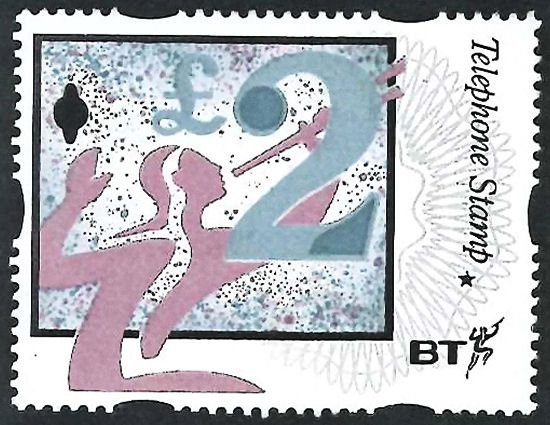 |
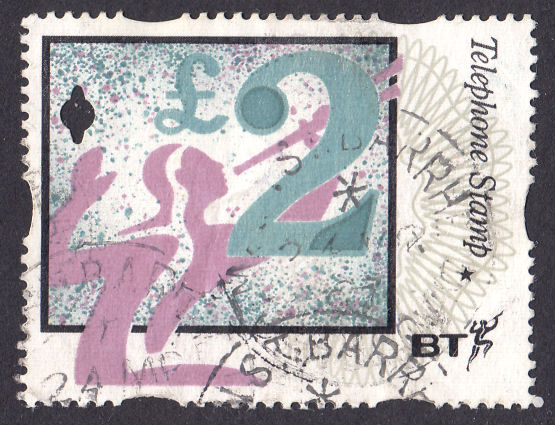 |
| Type 11 - RH11 | Type 11 - RH11 (used 24 March 1997 in Barrhead, Scotland) |
1996? Mint image courtesy of Mark Talbot, together with a used one of mine that seems to be dated March 1997.
| RH # | Hisc. | Type. | 1996 ? Description | Mint | Used |
|---|---|---|---|---|---|
| RH11 | - | 11 | £2 blue-grey, grey, mauve and pale blue (1996 ?) | 6.00 | - |
Here are some examples used in a telephone card with the stamps cancelled in 1996.
The card is shown half normal size with inside followed by outside. The cancel is shown twice normal size underneath.
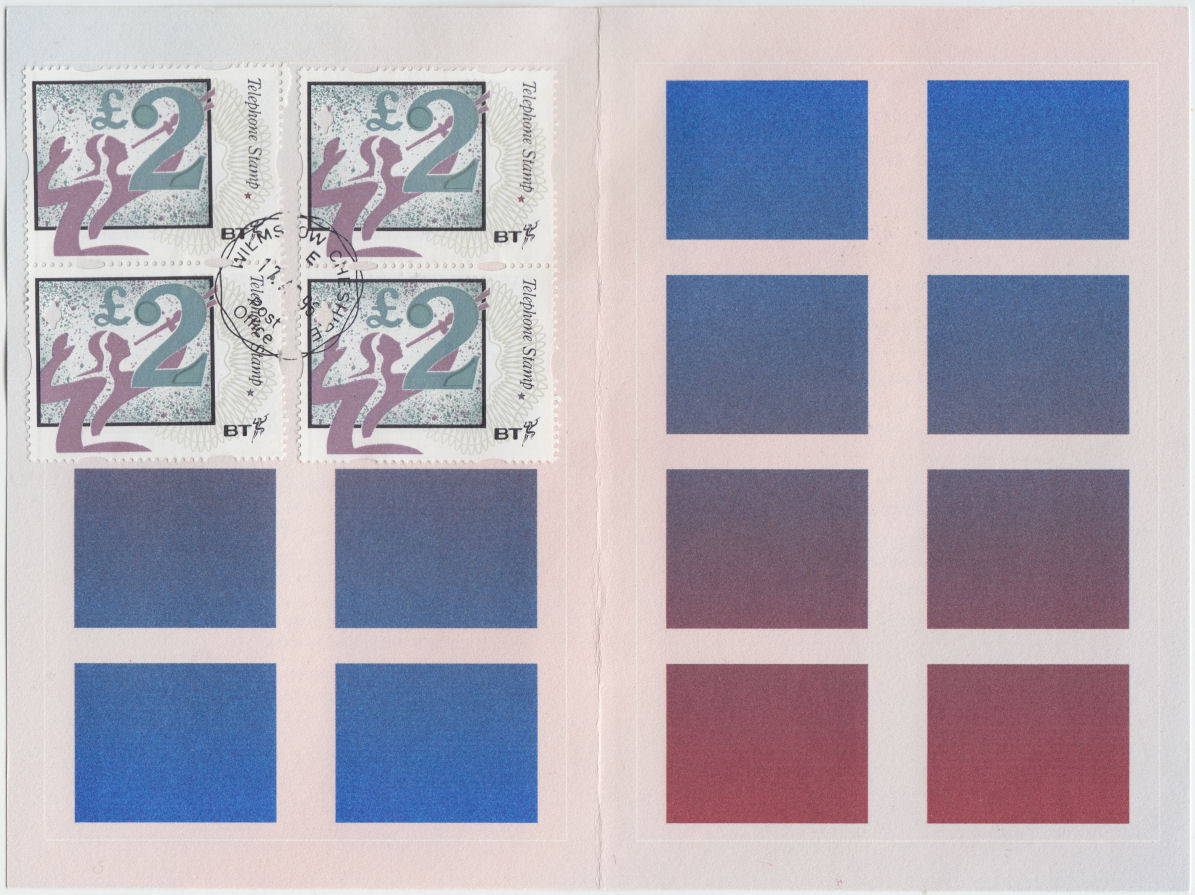
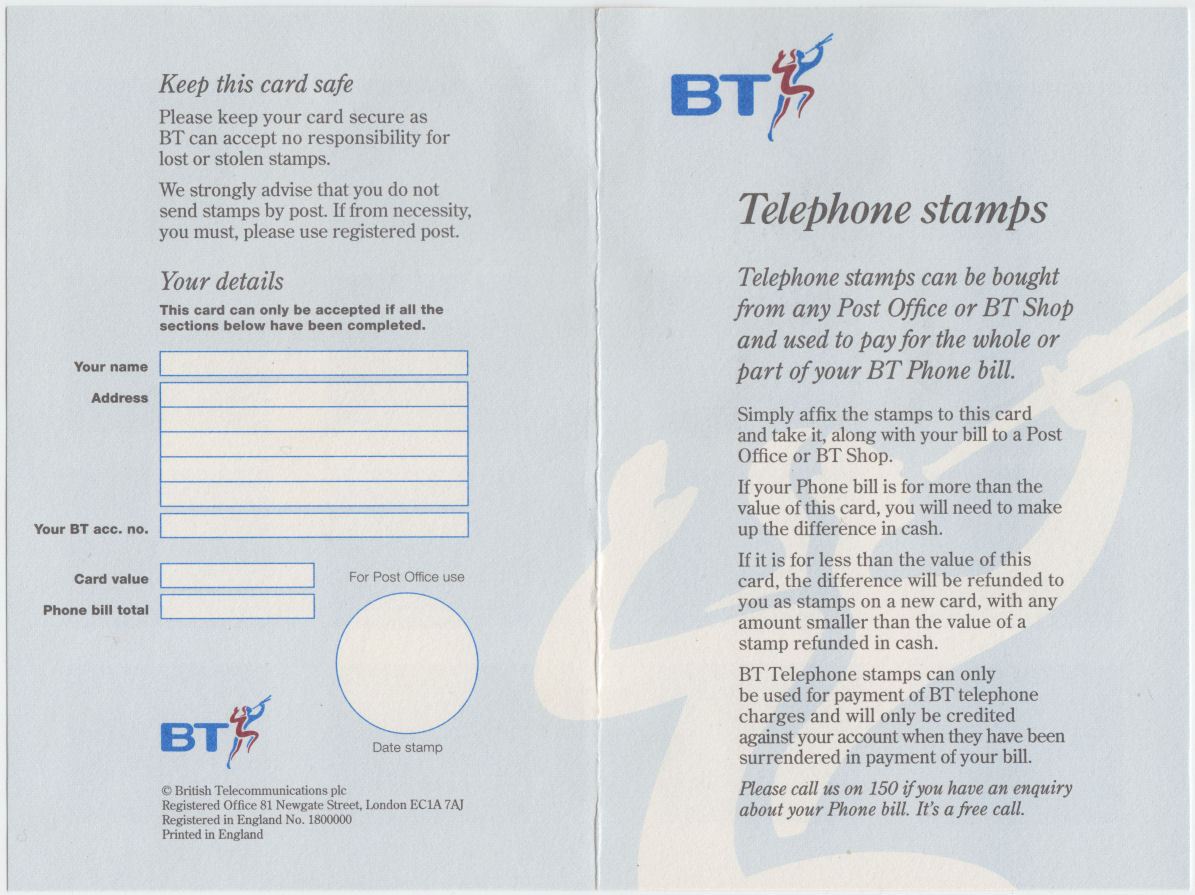
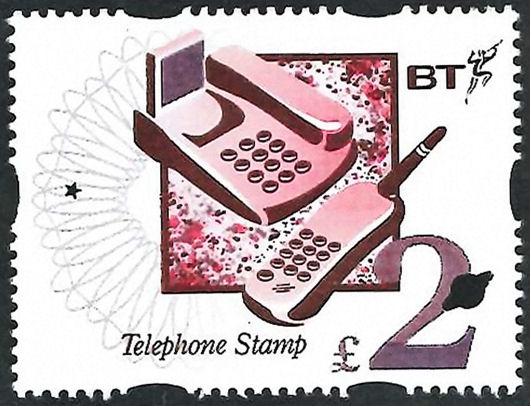 |
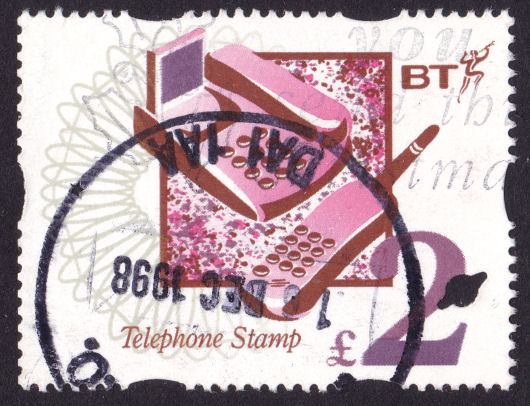 |
| Type 12 - RH12 courtesy of Mark Talbot | Type 12 - RH12 (used in Dartford, December 1998) |
| RH # | Hisc. | Type. | 1997 ? Description | Mint | Used |
|---|---|---|---|---|---|
| RH12 | - | 12 | £2 brown, mauve and pale grey (1997 ?) | 6.00 | - |
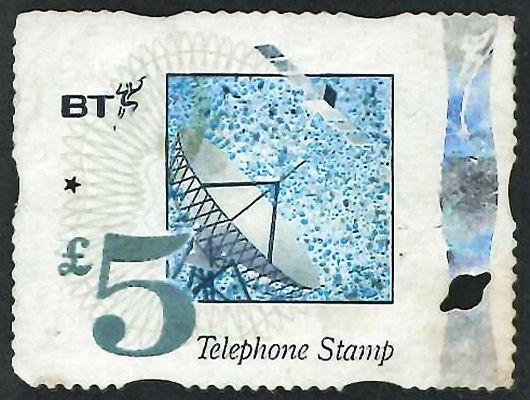 |
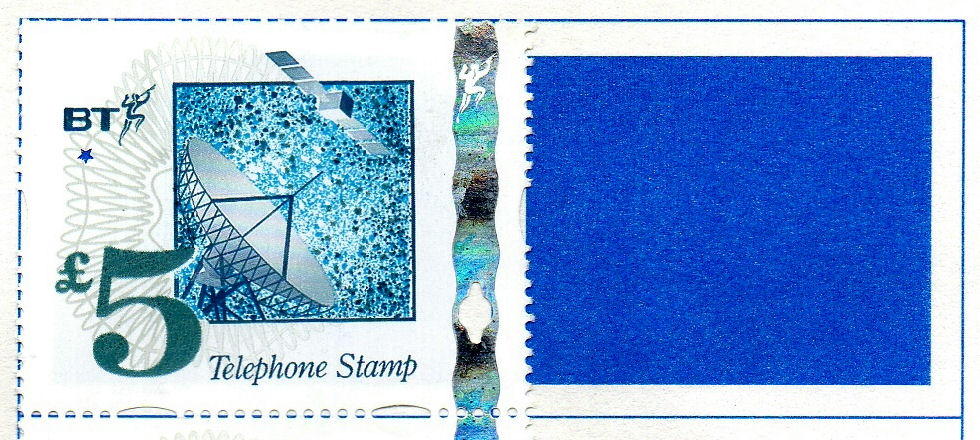 |
| Type 13 - RH13 - courtesy of Mark Talbot. | Type 13 - RH13a - courtesy of Jeff Turnbull. - star punch-hole raised, vertical strip changed, and "Saturn" punch-hole changed orientation |
Whilst RH8a and RH9a could be accidental, or the result of non-specification, this last has to be a deliberate change.
John Barefoot suggests that all of these variants are deliberate changes for security reasons. If that is true, then there should be many more such variants.
I would welcome images of any new discoveries.
| RH # | Hisc. | Type. | 1998 ? Description | Mint | Used |
|---|---|---|---|---|---|
| RH13 | - | 13 | £5 pale blue, grey and silver (1998 ?) | 24.00 | - |
| RH13a | - | 13 | security punch holes changed | 24.00 | - |
Wording changed to "Payment Stamp".
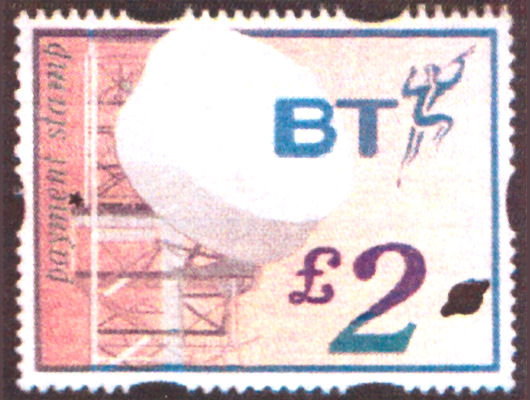 |
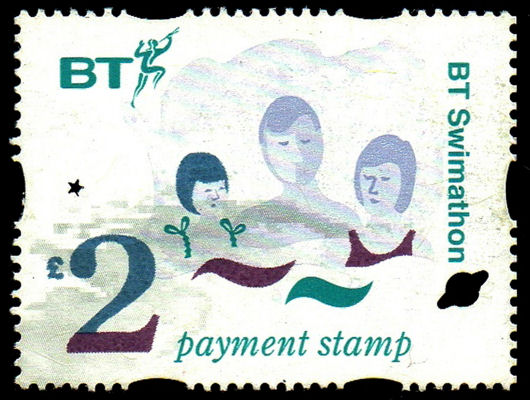 |
| Type 14 - RH14 (1998) - courtesy of John Barefoot. | Type 15 - RH15 - "Swimathon" - courtesy of Jeff Turnbull. |
| RH # | Hisc. | Type. | 1998 - 1999 ? Description | Mint | Used |
|---|---|---|---|---|---|
| RH14 | - | 14 | £2 blue, grey and salmon (1998?) | 6.50 | - |
| RH15 | - | 15 | £2 purple, pale blue and grey (1999 ?) | 18.00 | - |
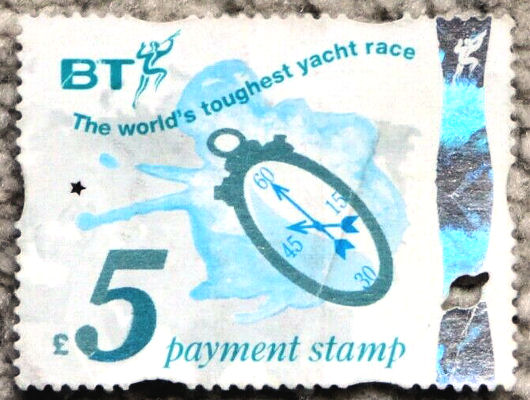 |
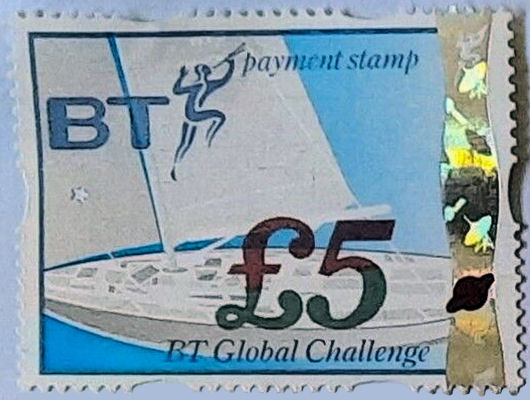 |
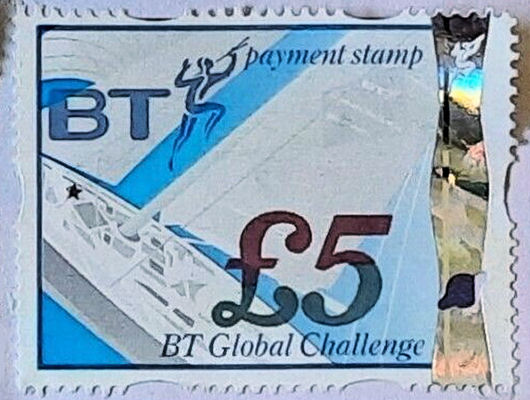 |
| Type 16 - RH16 - "world's toughest yacht race" - courtesy of Jeff Turnbull. | Types 17 and 18 - RH17 and RH18 - "Global Challenge" - images from the same BT card photograph - courtesy of Jeff Turnbull. | |
| RH # | Hisc. | Type. | 2000 ? Description | Mint | Used |
|---|---|---|---|---|---|
| RH16 | - | 16 | £5 pale blue, dark blue and grey (2000 ?) | 25.00 | - |
| RH17 | - | 16 | £5 pale blue, dark blue and brownish grey (2000 ?) | 25.00 | - |
| RH18 | - | 16 | £5 pale blue, dark blue and grey (2000 ?) | 25.00 | - |
The use of Telephone Savings Stamps was discontinued in 2000.
A timeline on the Evolution of British Post Office Telephones
Last updated 4th. January 2024
©Copyright Steve Panting 2012/13/14/15/16/17/18/19/20/21/22/23/24 except where stated.
Permission is hereby granted to copy material for which the copyright is owned by myself, on condition that any data is not altered and this website is given credit.